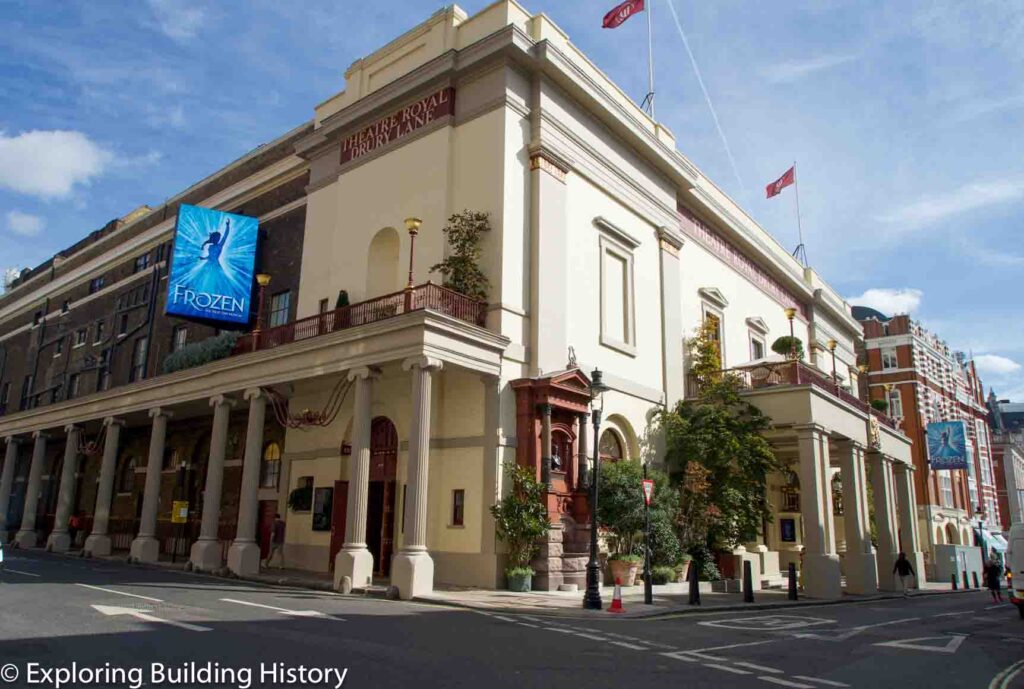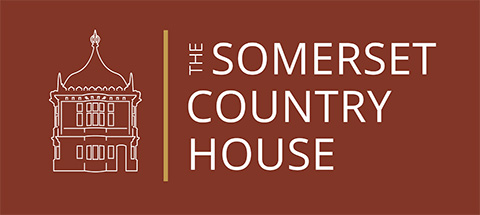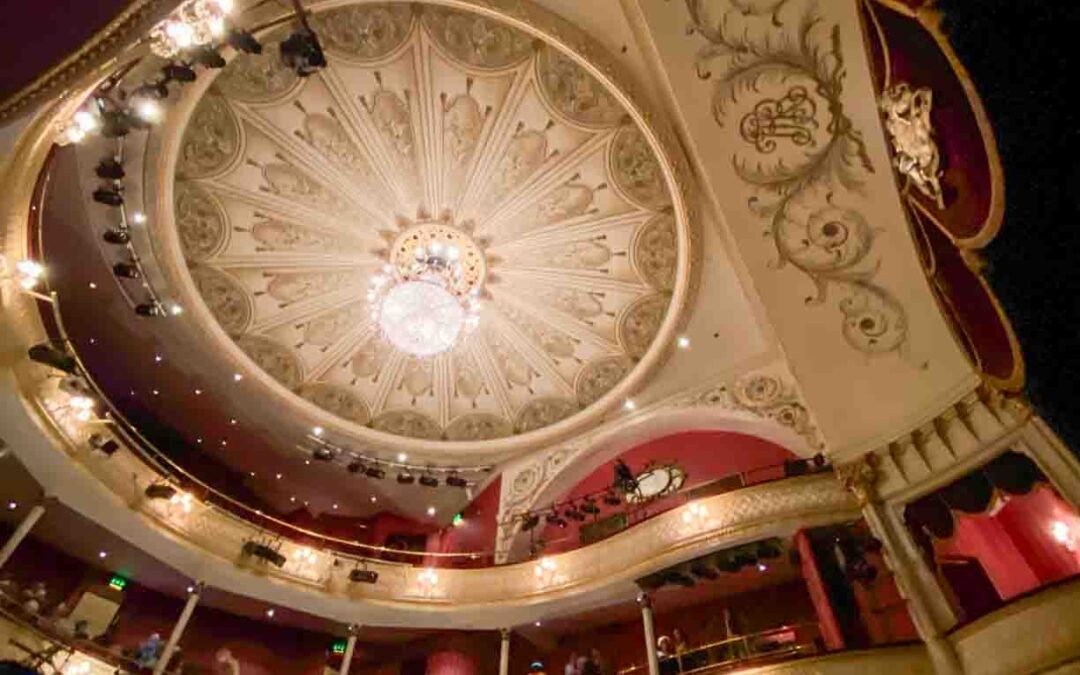Main Picture: Theatre Royal, Bath
In Edward Phelips’s diary of 1779 are embedded the plays that he, his family, and acquaintances attended. The theatres they frequented were Covent Garden and Drury Lane. The commercial theatre took off in the 18th C as an enterprise that went down well with the public. The theatre that Edward attended was demolished and rebuilt in 1794. This new incarnation of the Drury Lane theatre could accommodate 3,611 people.[i] The plays that Edward Phelips noted, and saw were a mixture of a couple of 17th C plays, tragedies, Shakespeare, and contemporary, hot of the press modern satire and pantomime.

Theatre Royal Drury Lane. The 1794 building burned down in 1809. It was rebuilt and opened 1812.
Culture was becoming commercialised with theatres popping across the country and not just in the major cities. Provincial theatres were making their beginnings. The original Theatre Royal in Bath was the Old Orchard Street Theatre which had been completed in 1750. The title of ‘Theatre Royal’, awarded by Royal Patent, occurred in 1768. Only Covent Garden and Drury Lane had the honour prior to this title addition, and Bath was the first to receive it outside of London. The theatre moved to its new building in Beauford Square in 1805.[ii]
The celebrity entrepreneur was also taking centre stage. Great actors of the day also became theatre managers.[iii] One of the greatest of these was David Garrick. Garrick had died at his home on Adelphi Terrace (a terrace of neoclassical terrace houses built by the Adam brothers between 1768 and 1772), on the 20th of January 1779. On the 1st of February his funeral procession took over an hour to travel from the Adelphi to Westminster Abbey, where he was buried in Poets’ Corner. The chief mourner was Sheridan and the cortege vast.[iv]
Edward Phelips notes in autobiography:
The first of February a very ostentatious funeral of Mr. Garrick the great actor & comedian passed through our street to the Abbey of Westminster. It was attended by many noblemen & gentlemen.[v]
What Edward Phelips, Family & Associates went to see January to April 1779
Below is the list of plays seen. What is interesting is the fact that they often took in two plays in one go. Dinner was had around four or five o’clock and then the evening was taken up by the plays. All the family were able to go to the play. At one instance William and Rhoda go together – Edward’s 24-year-old son and his 20-year-old daughter. Master Horner was also in attendance for one outing in April, and he was still of school age (after arriving in London on the 24th of January, Edward’s eldest son accompanied Master Horner to Charterhouse School).
List of Plays Seen:
The Spanish Fryer – tragic-comedy by john Dryden of 1681
Wonders of the Peak – a pantomime by Richard Brinsley Sheridan. A harlequinade-travelogue. Otherwise known as The Wonders of Derbyshire or Harlequin in the Peak. The scenery was created by Philippe de Loutherbourg (1740-1812). De Loutherbourg was a landscape painter and scene designer. A friend of David Garrick, who engaged him at Drury Lane Theatre. It may have been de Loutherbourg’s finest work, and a model survives in the Victorian and Albert Museum.[vi] The aesthetic ideal of the picturesque became fashionable in the latter quarter of the 18th C. It brought a romantic focus on English landscapes such as the peak district. De Loutherbourg visited Derbyshire to view and create sketches. The places he visited included Matlock, Chatsworth, and Peak’s Hole cavern at Castleton.[vii]
Comedy of Errors by William Shakespeare.
Touchstone (The) was a 1779 pantomime by Frederick Pilon.
The Discovery, a comedy of 1763 by Francis Sheridan, Richard Brinsley Sheridan’s mother.
The Law of Lombardy – tragedy by Robert Jephson of 1779 – Edward went the evening after it premiered at Drury Lane.
The Camp – A Musical Entertainment play by Richard Brinsley Sheridan of 1778. Premiered 15 Oct 1778 at Drury Lane. De Loutherbourg was the scene designer, creating a representation of the military camp at Coxheath.[viii] Coxheath, near Maidstone was the site of a large military camp in 1778. It was established during the American War of Independence. With the American revolutionaries allied with the French, the threat of a French invasion meant greater defences. Coxheath was the training camp for militia forces. It became a place of notoriety and scandal, attracting sightseers from across society. This led to the production of satirical representations in literature and the theatre.[ix]
Earl of Warwick – ‘The Tragical History of Guy Earl of Warwick’. A history play of late 16th or early 17th C. May have been written by Ben Jonson or Thomas Dekker but author not officially known.[x]
The Liverpool Prize – Not sure who it is by. Premiered 22 Feb 1779 at Covent Garden Theatre. ‘Naval themed Farce commenting on the American War of Independence.’ [xi]
The School for Scandal – Comedy by Richard Brinsley Sheridan. Premiered Drury Lane 8 May 1777.
Below are the extracts from Edward Phelips’s diary of 1779 which mention the theatre:[xii]
| Wednesday, 27th January 1779 | Even all but my wife to the Play. Sister, Rhoda, Ned, Spencers in Green Rows. I in Gallery.
The Spanish Fryer & the Wonders of the Peak |
| Monday, 1st February 1779 | Comedy of Errors & Touchstone. Met Mr J Daniel at the Play. Covent Garden. |
| Friday, 5th February 1779 | Even alone to the play. Came home before the entertainment was finished.
The Discovery & the Wonders of the Peak – Drury Lane |
| Tuesday, 9th February 1779 | Even the play – The new play of The Law of Lombardy & The Camp. |
| Thursday, 18th March 1779 | William & Rhoda went to the Play |
| Monday, 5th April 1779 | Afternoon to the Play by myself – wife & Rhoda went to the Mansion House ball – Sister at home.
Earl of Warwick & The Liverpool Prize – Covent Garden |
| Monday, 12th April 1779 | Even to the Play & not get in |
| Thursday, 15th April 1779 | At 4 T Horner dined with us – returned to the House of Lords & then followed the Ladies & T Horner to the Play – home at 12 to supper.
The School for Scandal & the Wonders of the Peak |
Quote from A.M. Nagler’s work of 1952 – A Source Book in Theatrical History on the ‘Green Rows’ that Edward mentions:
The Pit is an Amphitheatre, fill’d with Benches without Backboards, and adorn’d and cover’d with green Cloth. Men of Quality, particularly the younger Sort, some Ladies of Reputation and Virtue, and abundance of Damsels that haunt for Prey, sit all together in this Place, Higgledy-piggledy, chatter, toy, play, hear, hear not. Farther up, against the Wall, under the first Gallery and just opposite to the Stage, rises another Amphitheatre, which is taken by persons of the best Quality, among whom are generally very few Men. The Galleries, whereof there are only two Rows, are fill’d with none but ordinary People, particularly the Upper one.[xiii]
It is curious that Edward’s family sat in the green rows and he on his own in the gallery. The gallery is for ordinary people. It appears that generally in the theatre seating meant all sorts of classes were thrown together.
NOTES
Thomson, Peter, ‘Garrick, David (1717-1779)’, Oxford Dictionary of National Biography, Oxford University Press, 2004: online edn, Jan 2008, < https://doi.org/10.1093/ref:odnb/10408 > [accessed 17 January 2024]
[i] Roy Porter, English Society of the Eighteenth Century, (London: Penguin Group, 1982; repr. 1990), p. 231.
[ii] ‘Theatre Royal 1750 – 1805’, Old Theatre Royal, <https://oldtheatreroyal.com/museum/theatre-royal-1750-1805/> [accessed 17 January 2024].
[iii] Porter, p. 239.
[iv] Peter Thomson, ‘Garrick, David (1717-1779)’, Oxford Dictionary of National Biography, Oxford University Press, 2004: online edn, Jan 2008, < https://doi.org/10.1093/ref:odnb/10408 > [accessed 17 January 2024].
[v] S.R.O., ‘Autobiography of Edward Phelips (1725-97), c1794’, Phelips Manuscripts, Personal affairs, DD/PH/224/114.
[vi] Christopher Baugh, ‘Loutherbourg, Philippe Jacques [Philip James] de (1740-1812)’, Oxford Dictionary of National Biography, Oxford University Press, 2004: online edn, Jan 2008, <https://doi.org/10.1093/ref:odnb/17037> [accessed 17 January 2024].
[vii] ‘Set Model, ca. 1778’, V&A, 2008 < https://collections.vam.ac.uk/item/O179941/set-model-loutherbourg-philip-james/> [accessed 17 January 2024].
[viii] Baugh, ‘Loutherbourg, Philippe Jacques [Philip James] de (1740-1812)’.
[ix] ‘A View of the Camp at Cox Heath, near Maidstone in Kent, 1778’, National Army Museum, < https://collection.nam.ac.uk/detail.php?acc=1971-08-17-1> [accessed 17 January 2024].
[x] ‘The Tragical History of Guy Earl of Warwick’, Wikipedia, < https://en.wikipedia.org/wiki/The_Tragical_History_of_Guy_Earl_of_Warwick#:~:text=The%20Tragical%20History%20of%20Guy%20Earl%20of%20Warwick%20or%20The,16th%20or%20early%2017th%20century.> [accessed 22 January 2024].
[xi] ‘The Liverpool Prize’, Eighteenth Century Drama, <https://www.eighteenthcenturydrama.amdigital.co.uk/Documents/Details/HL_LA_mssLA468 >[accessed 17 January 2024].
[xii] S.R.O., ‘Diary of Edward Phelips of Monatcute House. 1 Jan 1770-31 Dec 1779’’, Stevens Cox Collection, A/CTP/3/3/1.
[xiii] A. M. Nagler, A Source Book in Theatrical History (Sources of Theatrical History), (New York: Dover Publications, 1952), p. 208.
BIBLIOGRAPHY
Baugh, Christopher, ‘Loutherbourg, Philippe Jacques [Philip James] de (1740-1812)’, Oxford Dictionary of National Biography, Oxford University Press, 2004: online edn, Jan 2008, <https://doi.org/10.1093/ref:odnb/17037> [accessed 17 January 2024]
Nagler, A.M., A Source Book in Theatrical History (Sources of Theatrical History), (New York: Dover Publications, 1952)
Porter, Roy, English Society of the Eighteenth Century, (London: Penguin Group, 1982; repr. 1990

